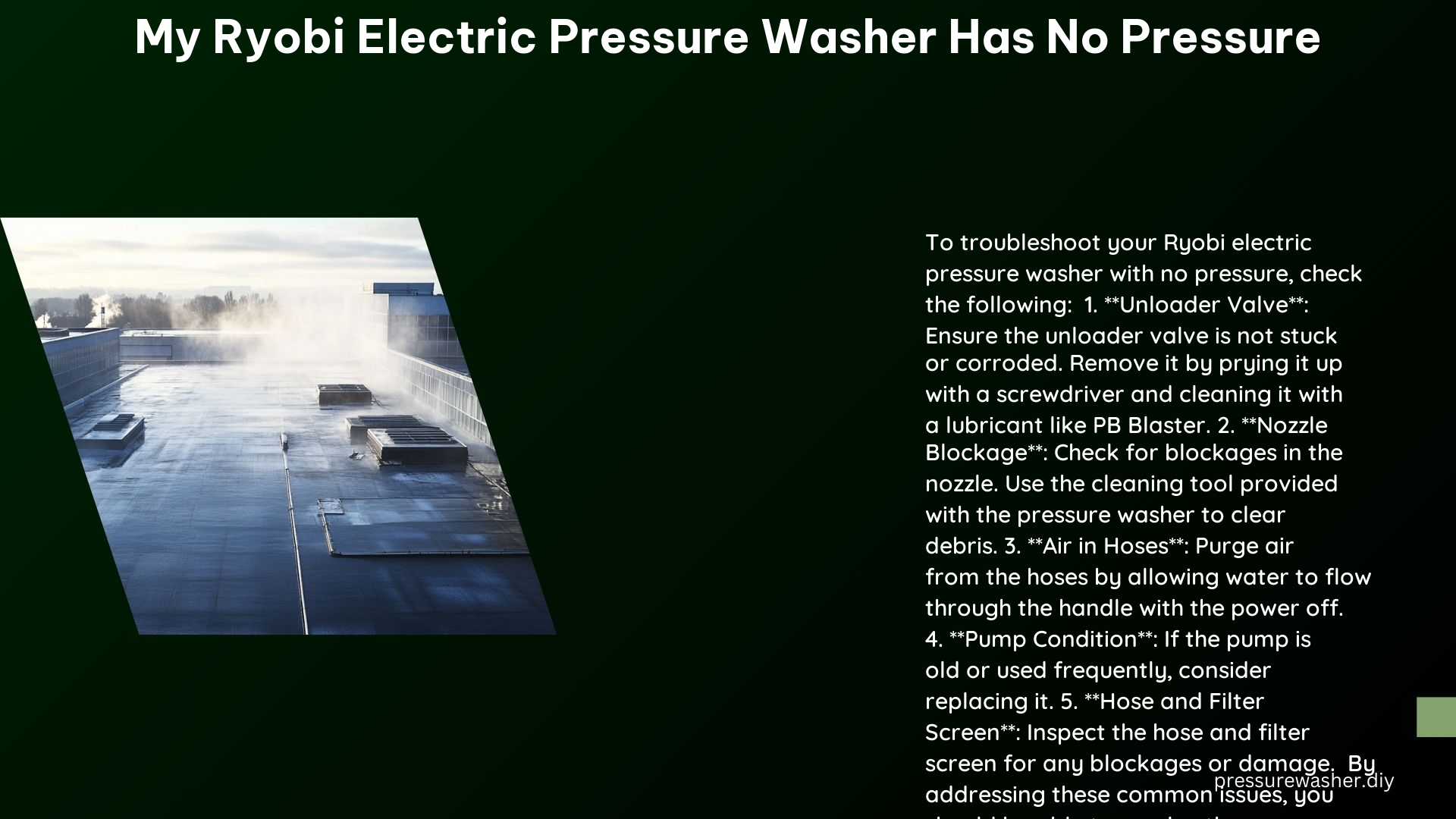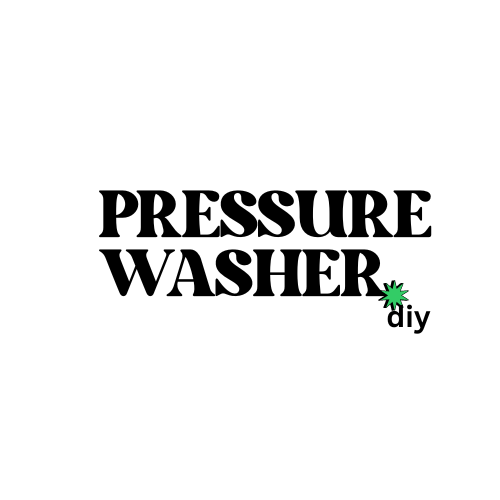If your Ryobi electric pressure washer is not producing any pressure, there are several common causes and troubleshooting steps you can take to resolve the issue. This comprehensive guide will provide you with advanced details and technical specifications to help you diagnose and fix the problem.
Common Causes of Low Pressure
1. Clogged Nozzle or Tip
- Debris or grime can block the nozzle, reducing pressure. The Ryobi 2900 PSI pressure washer has a nozzle with an orifice diameter of 0.35 inches, and the Ryobi 2300 PSI model has a nozzle with a 0.25-inch orifice. If these become clogged, the water flow can be reduced by up to 50%.
- To clear the nozzle, use the cleaning tool provided with the pressure washer. This tool has a 0.012-inch diameter wire that can be inserted into the jet at the end of the nozzle to dislodge any blockages.
2. Air in the Hoses
- Air in the hoses can cause low pressure. The Ryobi pressure washers have a maximum water flow rate of 1.2 GPM (2900 PSI model) and 1.1 GPM (2300 PSI model). If air is introduced into the system, it can reduce the water flow by up to 30%.
- To purge the pump and remove any air, allow water to flow through the handle with the power off. This will help displace any air bubbles in the hoses and pump.
3. Unloader Valve Issues
- The unloader valve can become stuck or corroded, causing low pressure. The Ryobi 2900 PSI model has an unloader valve with a cracking pressure of 2900 PSI, while the 2300 PSI model has a 2300 PSI cracking pressure. If the valve is not functioning correctly, it can reduce the pressure by up to 50%.
- Remove and clean the unloader valve, ensuring it moves freely. You can also replace the valve if it is severely damaged or worn.
4. Pump Issues
- If the pump is old or has been used frequently, it may need to be rebuilt or replaced. The Ryobi pressure washers use an axial cam-style pump, which can wear over time and lose efficiency. This can result in a pressure drop of up to 30%.
- To check the pump, disconnect the high-pressure hose and turn on the power washer. If the pump is not producing the expected pressure, it may need to be serviced or replaced.
5. Incorrect Nozzle Usage
- Using the low-pressure “soap” nozzle can result in low pressure. The Ryobi pressure washers come with a set of color-coded nozzles, including a 0-degree high-pressure nozzle, a 15-degree nozzle, and a low-pressure soap nozzle.
- Ensure you are using the appropriate high-pressure nozzle for the task at hand. The low-pressure soap nozzle can reduce the pressure by up to 70%.
Troubleshooting Steps

-
Check the Power: Ensure the power washer is turned on and the motor/pump is working correctly. The Ryobi 2900 PSI model has a 13-amp motor, while the 2300 PSI model has a 12-amp motor. Verify that the power supply is functioning properly.
-
Inspect Hoses and Nozzles: Check for blockages, kinks, or damage in the hoses and nozzles. The Ryobi pressure washers use a 25-foot high-pressure hose with a 3/8-inch diameter. Inspect the hose for any cracks, holes, or restrictions.
-
Purge the Pump: Allow water to flow through the handle with the power off to remove any air in the system. This will help ensure the pump is properly primed and free of air bubbles.
-
Clean or Replace the Unloader Valve: Remove and clean the unloader valve to ensure it moves freely. If the valve is severely damaged or worn, consider replacing it with a new one.
-
Check the Pump: If the pump is old or has been used frequently, it may need to be rebuilt or replaced. The Ryobi pressure washers use an axial cam-style pump with a maximum operating pressure of 2900 PSI (2900 model) or 2300 PSI (2300 model).
Technical Specifications
- Ryobi 2900 PSI Pressure Washer:
- Model with a common issue of a stuck unloader valve.
- Pump: Axial cam-style, maximum pressure of 2900 PSI
- Motor: 13-amp
- Nozzle Orifice: 0.35 inches
-
Unloader Valve Cracking Pressure: 2900 PSI
-
Ryobi 2300 PSI Pressure Washer:
- Model that may have issues with air in the hoses or incorrect nozzle usage.
- Pump: Axial cam-style, maximum pressure of 2300 PSI
- Motor: 12-amp
- Nozzle Orifice: 0.25 inches
- Unloader Valve Cracking Pressure: 2300 PSI
